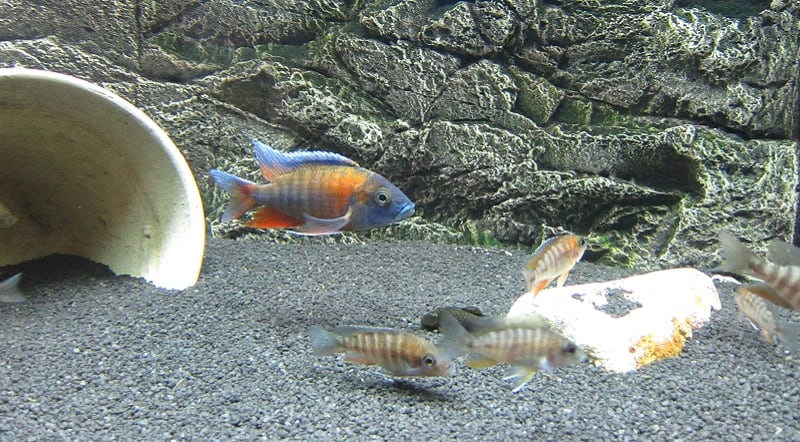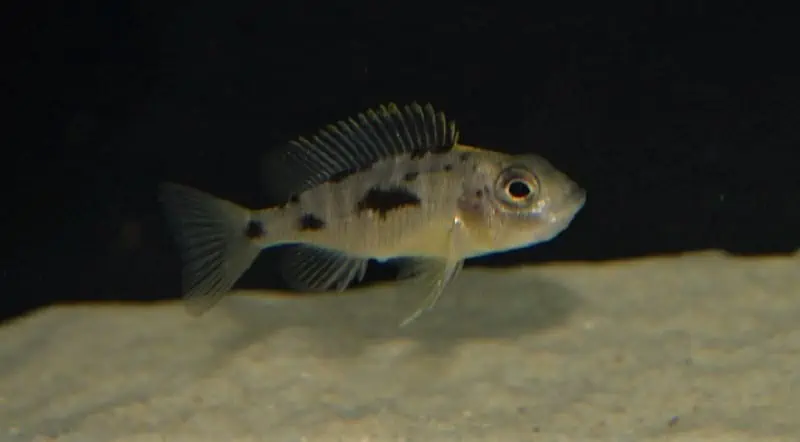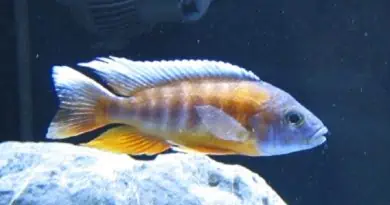Breeding African Cichlids
One of the most exciting parts of the fishkeeping hobby is breeding African cichlids. The way the males color up and display for the females, the courtship behavior, and the care the females show in looking after the eggs is truly amazing to watch. Not to mention the enjoyment to be had from growing out the fry.
While African cichlids aren’t particularly difficult to breed, there are some things that can be done to give you a better chance of success.
Most of the preparation is taken care of through regular tank maintenance. Feeding frozen brine shrimp and large water changes with slightly cooler water are highly effective for triggering breeding.
In this article, I’ll share with you some of my experience, tips and the problems I have encountered with breeding African cichlids.
Types of Breeding Projects
To start off let’s have a look at some of the different types of breeding projects.
Species Only Breeding Tank
In this breeding project, you are breeding only one species of fish, usually a single male and 4 or 5 females. This type of setup will avoid the possibility of the fish breeding with a different species. You can guarantee 100% that the fry are of this species.
This is a popular setup for breeders who plan on selling the fry.
Mixed Species Breeding Tank
This type of breeding project is usually done in a large tank and involves picking a few different breeding groups which look different enough that there is less chance of them crossbreeding. However, unless you have seen the fish breeding you cannot guarantee that the fry are from the same species.
The benefit of this setup is that you can have a more interesting variety of stock than in a species only tank.
Wild Caught Fish Breeding Project
This type of project involves purchasing and breeding a wild caught species of fish. Wild caught fish are expensive and usually this type of breeding is done by fish keepers with enough experience to properly care for wild caught fish. The fry are known as F1 and are very popular in the hobby as they retain much of the shape and color of their wild parents but are more suited to captive water parameters.
The CARES Preservation Program is a great example of wild caught fish breeding being done the right way. Dedicated hobbyists who are members of this program breed a species of fish that is in danger in the wild and distribute the offspring to other fish keepers. Surprisingly, some of the cichlids on the CARES priority list are now common in the aquarium hobby.
Line breeding
Line breeding is the selective breeding of one species of fish to enhance the desired traits, such as stronger color, longer fins, or nicer body shape. Basically, you are always breeding the best males with the best females to give the highest quality offspring possible. This can produce some amazing results.
One of the downsides of line breeding is the possibility of genetic defects or deformities caused by inbreeding the offspring for a few generations. This can be avoided by breeding with the same species of fish from another source when needed to provide genetic diversification.

Purchasing the Breeding Stock
When starting a breeding project, I like to purchase good quality fish from a reputable supplier. The initial cost for the stock will be higher but the tank setup, ongoing costs and effort required to manage the breeding project are the same. However, most of the fry which are produced will be of the same high quality as their parents.
I have had many different breeding setups over the years and always started off buying a group of juveniles and growing them out to spawning size. The downside with this approach of buying young fish it that you may not be able to differentiate males from females and don’t have control over the male to female ratio.
The ideal male to female ratio is 1 male to 4 or 5 females. In a larger tank, you may be able to keep several males in the breeding colony, provided they aren’t overly aggressive to each other.
You can speed things up considerably by stocking with a confirmed breeding group of adult sized fish but it will be expensive and adult fish don’t ship well and take more time to settle into a new environment. Additionally, as the fish go past their prime, they don’t breed so frequently. You may miss out on the most productive period.
How to vent African cichlids
Knowing how to differentiate males from females is important. While males showing color are easy to identify, it can be difficult to tell un-colored males from females. Venting involves turning the fish over and having a look at what’s going on down there.
In a male, both holes are the same size. Females have different size holes, the lower hole being larger and may look more swollen than the top hole.

Breeding Tank setup
Tank size should be appropriate to the species of fish you plan on breeding.
In a breeding tank setup, my substrate preference is fine sand or bare bottom. Avoid sharp gravel which may get picked up along with the eggs by the female and will burst the eggs when they are being tumbled in the female’s mouth.
Position rocks to allow plenty of possible breeding spots, private areas sheltered away from strong currents and out of the sight of other fish which will want to interfere with the process.
The use of a tank divider may be necessary to separate an overly aggressive male from the females if none of the females are ready to breed.

Tips to get African Cichlids Breeding
Feed Frozen Brine Shrimp
Female cichlids require plenty of food for producing eggs. Frozen brine shrimp in addition to quality pellets is great for egg production.
Brine shrimp also helps prevent the females from becoming egg bound, where the fish is unable to lay eggs and often leads to death.
When the female has a nice rounded stomach and her egg tube is protruding, she is ready to breed.
Water change with cooler water
Performing a large water change with water that is a few degrees lower than the temperature of the water in the tank is a great way to trigger the breeding process.
African cichlid female is holding eggs. Now what?
The natural process is that the female cichlid will pick up the eggs in her mouth and hold them for around 3 to 4 weeks before releasing the free-swimming fry. The female will protect the young fry for a period, with the fry returning to the protection of her mouth at the first signs of danger.
I normally strip the female after she has been holding the eggs in her mouth for 2 days. The eggs are then placed into an egg tumbler until the fry are free swimming. This method provides the highest fry survival rate. Here is a short video on how to strip African cichlids.
There are other options such as removing the female into a separate tank and allowing her to hold the eggs until the fry are released. This often results in smaller batch sizes as some of the eggs may get burst while being tumbled in the female’s mouth. Additionally, the female may spit out or eat the eggs.
Another option is to do nothing and let the female hold the eggs for the duration and release the new fry back into the breeding tank. However, this option doesn’t make much sense as there will be very few surviving fry to justify your breeding efforts.
Caring for the young fry
For the first month or so the new fry are quite fragile and sensitive to water changes. A breeder box that hangs on the side of the tank is a great way to house the fry for the first few weeks. An air pump is used to continuously push water through the breeder box from the main tank.
It is normal for the fry to stay at the bottom of the breeder box and not move around much for the first week.
Once the eggs sack is fully dissolved the fry are ready to start feeding. The new fry are fed pellets that have been soaked in water for a few minutes and mashed into dust size particles. Hikari First Bites is a powdered food if you are looking for prepared food. There is no need to bother with hatching live baby brine shrimp as food for African cichlid fry.
After a couple of weeks, the fry are ready to be moved to a grow-out tank.
Conclusion
Breeding African cichlids is a great way to bring new excitement to the hobby. It’s not as difficult as you would expect but a lot of work is involved in caring for the fry. There will be multiple batches of fry and various stages of development that cannot be mixed together. These batches of fry need to be separated into different tanks, all requiring frequent water changes.
Nevertheless, this additional work should not be sufficient to put you off breeding African cichlids if it is something you would like to try.
Thanks for reading. If you found this article helpful, don’t forget to share 🙂



